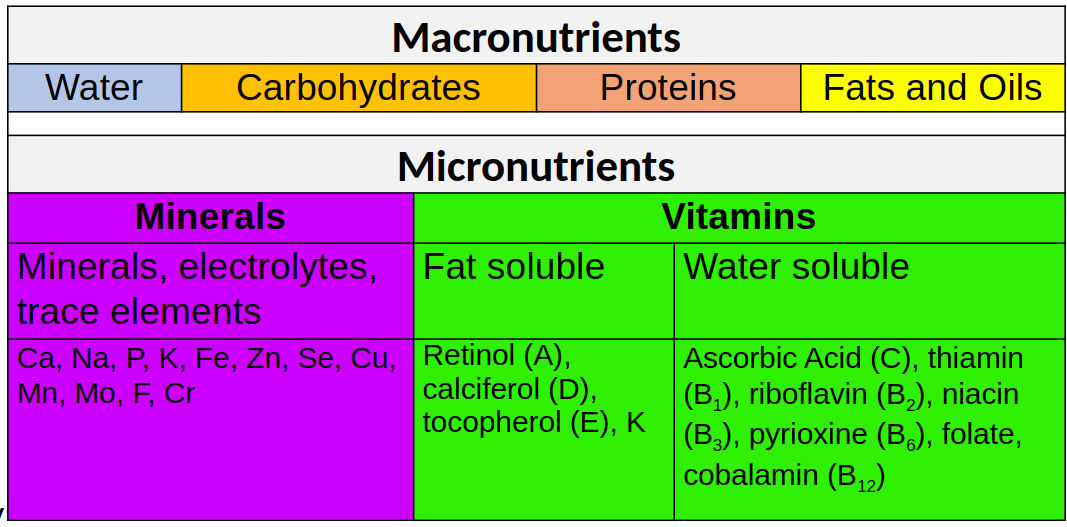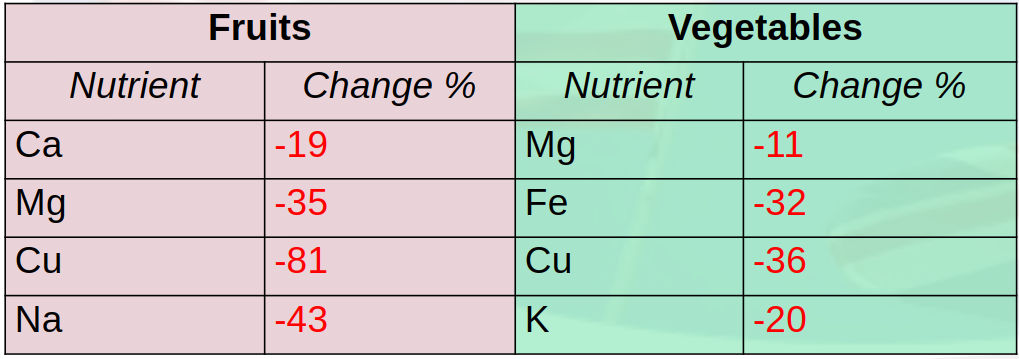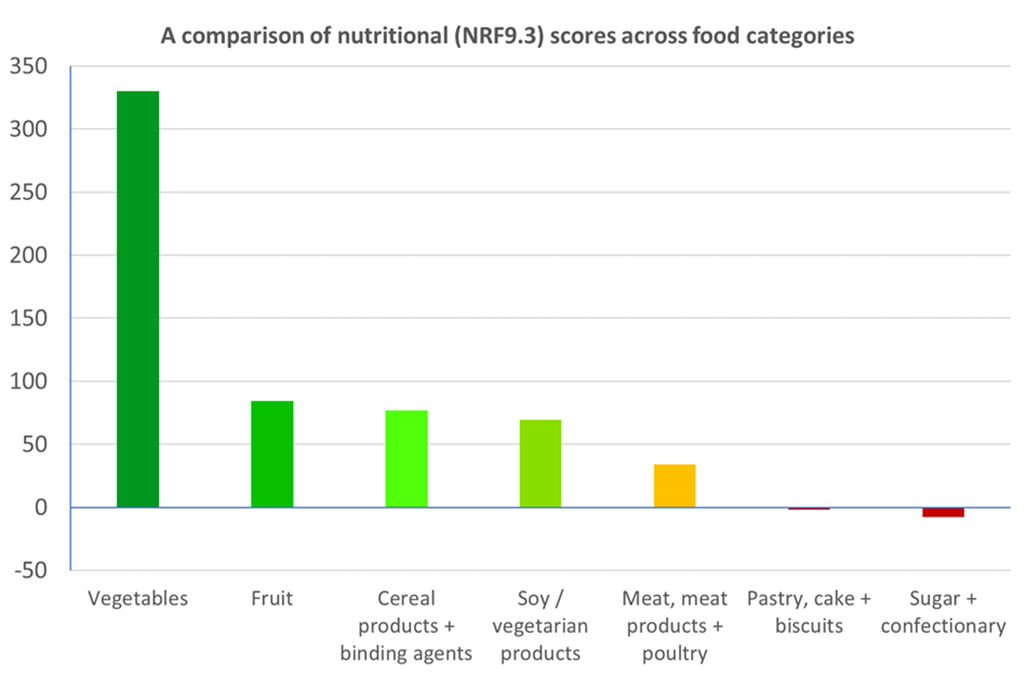Pete Jorgensen
Plant Science & Horticulture
Micronutrient deficiencies, and the growing challenge of global food production
The earth is forecast to become home to 9.7 billion people by 2050. Providing enough food for everybody to eat will present a significant challenge. Past efforts to increase edible crop yields have been successful, but may have been at the expense of reducing nutrient density. There are currently 842 million people who do not get the minimum recommended calories from their diet, but 2 billion suffer from some form of micronutrient deficiency (MND). Many health problems and chronic diseases are associated with MNDs, contributing to lost productivity and increased healthcare expenditure. If efforts to meet the basic calorific requirements of a growing population ignore the full complexity of human nutritional requirements, we will likely see a significant increase in chronic disease and illness worldwide.
MNDs are associated with many of the health issues that are so common in developed countries: increased risk of obesity, cardiovascular disease, diabetes, immune system disorders, mental illness and fatigue. Many diseases associated with MNDs are heritable.
The Journal of the American College of Nutrition, and The British Food Journal, have both reported that the nutrient content of fresh produce appears to have diminished significantly during the latter half of the 20th century. Reasons may include: breeding programs too narrowly focussed on increasing yield, methods used in industrialized agriculture, and post harvest handling including storage and distribution.
Climate change may further compound this problem. The journal Nature recently published a study suggesting that the atmospheric concentration of CO2 expected toward the latter part of this century could lead to a decline of micronutrients and protein in globally important staples, including wheat and rice.
The nutrient density of food crops can be affected by many factors: light wavelength and intensity, plant genotype, soil microbial ecosystems, soil type, rootstocks (used in grafting), fertilizer inputs, and land management practices. Scientists have been able to harness some of these variables to influence nutrient content. For example, genetic modification has produced micronutrient fortified food crops. Examples include ‘Golden Rice’ with enhanced levels of vitamin A and GM maize with fortified levels of vitamin A, folate, and vitamin C. However, transgenic crops remain unpopular or illegal in many countries. The accidental insertion of viral genes in food crops, and prolific ‘off-target’ DNA editing, are unlikely to instil confidence in this technology.
Conventional crop breeding is less controversial. HarvestPlus is part of the Consultative Group on International Agricultural Research (CGIAR); they began a coordinated crop breeding program in 2003. Firstly, specific micronutrient deficiencies endemic in defined geographical regions are identified, and then breeding programs are used to develop new strains of staple crops with naturally higher levels of the needed nutrient. Seed banks have proven a useful source for germplasm in some of these programs. To date, HarvestPlus has developed at least 16 naturally biofortified crops that are now in productive use, benefitting numerous countries across Africa and Asia. Examples include: iron-fortified beans, and zinc-fortified wheat.
Integrated Nutritional Management (INM) programs can harness cultivation techniques to enhance specific nutrients in food crops. One example is the fertigation of basmati rice with zinc phosphate, which enhances the zinc content of the food crop. Soil depletion is mitigated by using a post-harvest leguminous green manure. Using INM requires precise science-based skills to be effective, and to minimize environmental degradation. It may be prohibitively expensive in areas with the most urgent needs.
The nutritional composition of plants can also be influenced by a range of soil microbiota, including fungi and bacteria - healthy soil is one of the most complex ecosystems on the planet. Root systems exude carbohydrates as food for soil microbes, and in return, these organisms unlock nutrients from the soil, making them available for the plants to use. Organic farming focusses on techniques that do as little damage as possible to this biome. As a result, organic produce can have a significantly higher nutrient density than non-organic. Yield is frequently lower, but reduced inputs mean these methods are often more resource efficient. It is notable that there has been comparatively little funding for scientific projects aimed at refining and improving organic production methods.
Supporting further research that can expand our understanding of how rhizospheric ecosystems function is recommended as a priority action. Soil science programs could be combined with complimentary breeding programs like those conducted by HarvestPlus. This sort of coordinated scientific program could help produce resilient, geographically adapted crops, that work sustainably with healthy soil to produce nutritious food. Success will depend on stable long-term investment combined with international, and cross-disciplinary cooperation.
Ensuring the availability of sufficient nutrient rich food is of primary concern. However, countries with access to a wide variety of fresh produce, including the UK, still have large numbers of people making poor dietary choices – 26.9% of the UK adult population is now clinically obese. Educational campaigns lack impact, and nutritional labelling is absent of micronutrient data. More imaginative means of conveying the health benefits of fresh fruit and vegetables may have better success in changing consumer habits.

Forget food labelling, it doesn't work. Deploying emotive, positive messaging, will.
Berries Bring Back the Bounce, copy and artwork © 2018 Peter Jorgensen.
Modern marketing techniques employ a range of emotive methods which aim to influence consumer behaviour. Often, there is a dream-like story attached to a product that is conveyed through still or moving images. This sort of advertising bypasses the complex mental effort required to engage with information-based campaigns. The positive outcome of such a campaign carries enormous potential economic benefits. Mitigating the burden on the healthcare budget combined with increased productivity would benefit the national purse. Producers would be rewarded by increased demand and enhanced perception of the value of their crops. Funding could come from a partnership of producers, retailers, and the government. All could potentially achieve significant gains - far outweighing the costs.
Notable facts (produced in 2018)
Figure 1: A few examples from dozens of micronutrients that are ignored when only macronutrients are accounted for.

Figure 2: How the nutrient content of fresh fruit and vegetables fell between 1960 and 1991 per USDA figures. A focus on yield weight and profit has led to a degradation of food quality, in addition to contamination with toxic agrochemicals that can damage biological absorption of nutrients in the human body.

Figure 3: Experiments show significant drops in nutrient content of common staple foods at higher concentrations of CO2 (550 ppm).

Figure 4: How different food categories differ in their nutritional score.

- 10% of UK households with children under 15 suffer severe food insecurity.
- Malnutrition accounts for over 184 000 hospital bed days in the UK. (65 000 in 2006-07).
- There may be a causal link between MND, type II diabetes and obesity – connections with hormone production - insulin (regulates blood sugar) and leptin (regulates hunger).
- Grafted root stocks can dramatically reduce nutritional content of crops, despite producing higher yields.
- Altering light quality can increase produce weight, but adversely affect beneficial content such as flavanoids.
- Use of arbuscular mycorrhizal fungi, and plant growth promoting rhizobacteria, can increase nutrient uptake in the root system, and enhance nutrient content of food.
- Organic production can result in lower yields, but the food can contain up to 40% higher nutrient content per unit.
Bibliography
Bailey, R. L., West-Jr, K. P. & Black, R. E., 2015. The epidemiology of global micronutrient deficiencies. *Annals of Nutrition and Metabolism*, 66(2), pp. 22-33.
Barański, M. et al., 2014. Higher antioxidant and lower cadmium concentrations and lower incidence of pesticide residues in organically grown crops: a systematic literature review and meta-analyses. *British Journal of Nutrition*, 112(5), pp. 794-811.
Begley, J. D., 2016. CRISPR enthusiasts have their head in the sand about the safety of gene editing. [Online] Available at: https://www.statnews.com/2016/07/18/crispr-off-target-effects/ [Accessed 10 February 2018].
Bona, E., Lingua, G. & Todeschini, V., 2016. Effect of bioinoculants on the quality of crops. In: *Bioformulations: For Sustainable Agriculture*. New Delhi: Springer, pp. 93-124.
Brandt, K., Leifert, C., Sanderson, R. & Seal, C. J., 2011. Agroecosystem management and nutritional quality of plant foods: the case of organic fruits and vegetables. *Critical Reviews in Plant Sciences*, 30(1-2), pp. 177-197.
Crozier, A., Clifford, M. N. & Ashihara, H., 2006. *Plant Secondary Metabolites*. 1st ed. Oxford: Blackwell Publishing.
Davis, D. R., Epp, D. M. & Riordan, H. D., 2004. Changes in USDA food composition data for 43 garden crops, 1950 to 1999. *Journal of the American College of Nutrition*, 23(6), pp. 669-682.
De Ponti, T., Rijk, B. & Van Ittersum, M. K., 2012. The crop yield gap between organic and conventional agriculture. *Agricultural Systems*, Volume 108, pp. 1-9.
FAO, 2013. *The State of Food Insecurity in the World, Executive Summary*. Rome: Food and Agriculture Organisation of the United Nations.
FBSSAN, 2015. *Biofortification: A threat to food security and sovereignty*. Rio De Janeiro: FBSSAN.
García, O. P., Long, K. Z. & Rosado, J. L., 2009. Impact of micronutrient deficiencies on obesity. *Nutrition Reviews*, 67(10), pp. 559-572.
García-Macías, P. et al., 2007. Changes in the flavonoid and phenolic acid contents and antioxidant activity of red leaf lettuce (*Lollo Rosso*) due to cultivation under plastic films varying in ultraviolet transparency. *Journal of Agricultural and Food Chemistry*, 55(25), pp. 10168-10172.
Garg, M. et al., 2018. Biofortified crops generated by breeding, agronomy, and transgenic approaches are improving lives of millions of people around the world. *Frontiers in Nutrition*, 5(12), pp. 1-33.
Gasnier, C. et al., 2009. Glyphosate-based herbicides are toxic and endocrine disruptors in human cell lines. *Toxicology*, 262(3), pp. 184-191.
Gibney, M. J., Lanham-New, S. A., Cassidy, A. & Vorster, H. H., 2009. *Introduction to Human Nutrition*. 2nd ed. Chichester: Wiley-Blackwell.
HarvestPlus, 2018. *Crops*. [Online] Available at: http://www.harvestplus.org [Accessed 15 February 2018].
17. Järup, L. & Åkesson, A., 2009. Current status of cadmium as an environmental health problem. *Toxicology and Applied Pharmacology*, 238(3), pp. 201-208.
Kaidar-Person, O., Person, B., Szomstein, S. & Rosenthal, R. J., 2008. Nutritional deficiencies in morbidly obese patients: a new form of malnutrition?. *Obesity Surgery*, 18(7), pp. 870-876.
Mayer, A. M., 1997. Historical changes in the mineral content of fruits and vegetables. *British Food Journal*, 99(6), pp. 207-211.
Monasterio, I. & Graham, R. D., 2000. Breeding for trace minerals in wheat. *Food and Nutrition Bulletin*, 21(4), pp. 392-396.
Myers, S. S. et al., 2014. Increasing CO2 threatens human nutrition. *Nature*, 510(7503), pp. 139-142.
OECD, 2017. *Health at a Glance 2017: OECD Indicators*. Paris: OECD.
Podevin, N. & Du Jardin, P., 2012. Possible consequences of the overlap between the CaMV 35S promoter regions in plant transformation vectors used and the viral gene VI in transgenic plants. *GM Crops & Food*, 3(4), pp. 296-300.
Pooniya, V. & Shivay, Y. S., 2013. Enrichment of basmati rice grain and straw with zinc and nitrogen through ferti-fortification and summer green manuring under Indo-Gangetic plains of India. *Journal of Plant Nutrition*, 36(1), pp. 91-117.
Rekhy, R. & McConchie, R., 2014. Promoting consumption of fruit and vegetables for better health: Have campaigns delivered on the goals?. *Appetite*, Volume 79, pp. 113-123.
Reganold, J. P. & Wachter, J. M., 2016. Organic agriculture in the twenty-first century. *Nature Plants*, Volume 2, p. 15221.
Streppel, M. T. et al., 2014. Nutrient-rich foods, cardiovascular diseases and all-cause mortality: the Rotterdam study. *European Journal of Clinical Nutrition*, 68(6), pp. 741-747.
The Food Foundation, 2017. *UK and Global Malnutrition: The New Normal*. London: The Food Foundation.
Von Grebmer, K. et al., 2014. *Global Hunger Index*. Washington DC: International Food Policy Research Institute.
Vrcek, I. V. et al., 2011. The effect of grafting on the antioxidant properties of tomato (*Solanum lycopersicum* L.). *Spanish Journal of Agricultural Research*, 9(3), pp. 844-851.
Weixin, C., Coleman, D. C., Carroll, C. R. & Hoffman, C. A., 1993. In situ measurement of root respiration and soluble C concentrations in the rhizosphere. *Soil Biology and Biochemistry*, 25(9), pp. 1189-1196.
Wu, M. C. et al., 2007. A novel approach of LED light radiation improves the antioxidant activity of pea seedlings. *Food Chemistry*, 10(4), pp. 1753-1758.
Yetisir, H. et al., 2013. Rootstocks effect on plant nutrition concentration in different organs of grafted watermelon. *Agricultural Sciences*, 4(5), pp. 230-237.
Zhang, J. et al., 2017. Novel pathways of endocrine disruption through pesticides interference with human mineralocorticoid receptors. *Toxicological Sciences*, p. kfx244.